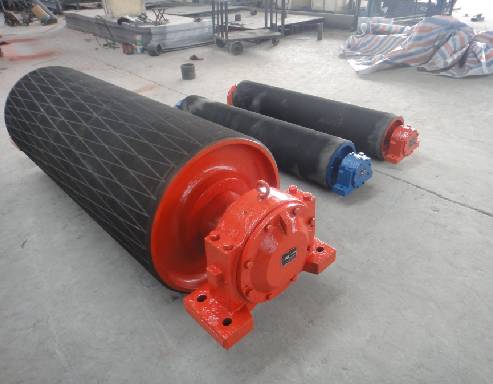 Afrikaans
Afrikaans  Albanian
Albanian  Amharic
Amharic  Arabic
Arabic  Armenian
Armenian  Azerbaijani
Azerbaijani  Basque
Basque  Belarusian
Belarusian  Bengali
Bengali  Bosnian
Bosnian  Bulgarian
Bulgarian  Catalan
Catalan  Cebuano
Cebuano  Corsican
Corsican  Croatian
Croatian  Czech
Czech  Danish
Danish  Dutch
Dutch  English
English  Esperanto
Esperanto  Estonian
Estonian  Finnish
Finnish  French
French  Frisian
Frisian  Galician
Galician  Georgian
Georgian  German
German  Greek
Greek  Gujarati
Gujarati  Haitian Creole
Haitian Creole  hausa
hausa  hawaiian
hawaiian  Hebrew
Hebrew  Hindi
Hindi  Miao
Miao  Hungarian
Hungarian  Icelandic
Icelandic  igbo
igbo  Indonesian
Indonesian  irish
irish  Italian
Italian  Japanese
Japanese  Javanese
Javanese  Kannada
Kannada  kazakh
kazakh  Khmer
Khmer  Rwandese
Rwandese  Korean
Korean  Kurdish
Kurdish  Kyrgyz
Kyrgyz  Lao
Lao  Latin
Latin  Latvian
Latvian  Lithuanian
Lithuanian  Luxembourgish
Luxembourgish  Macedonian
Macedonian  Malgashi
Malgashi  Malay
Malay  Malayalam
Malayalam  Maltese
Maltese  Maori
Maori  Marathi
Marathi  Mongolian
Mongolian  Myanmar
Myanmar  Nepali
Nepali  Norwegian
Norwegian  Norwegian
Norwegian  Occitan
Occitan  Pashto
Pashto  Persian
Persian  Polish
Polish  Portuguese
Portuguese  Punjabi
Punjabi  Romanian
Romanian  Russian
Russian  Samoan
Samoan  Scottish Gaelic
Scottish Gaelic  Serbian
Serbian  Sesotho
Sesotho  Shona
Shona  Sindhi
Sindhi  Sinhala
Sinhala  Slovak
Slovak  Slovenian
Slovenian  Somali
Somali  Spanish
Spanish  Sundanese
Sundanese  Swahili
Swahili  Swedish
Swedish  Tagalog
Tagalog  Tajik
Tajik  Tamil
Tamil  Tatar
Tatar  Telugu
Telugu  Thai
Thai  Turkish
Turkish  Turkmen
Turkmen  Ukrainian
Ukrainian  Urdu
Urdu  Uighur
Uighur  Uzbek
Uzbek  Vietnamese
Vietnamese  Welsh
Welsh  Bantu
Bantu  Yiddish
Yiddish  Yoruba
Yoruba  Zulu
Zulu steel guide roller
Understanding Steel Guide Rollers An Essential Component in Modern Industries
Steel guide rollers are indispensable components utilized in various industrial applications. These rollers are specifically designed to guide, support, and facilitate the movement of materials and machinery, ensuring smooth and efficient operations in environments ranging from manufacturing plants to construction sites.
The primary function of steel guide rollers is to reduce friction between moving parts, allowing materials to glide smoothly along conveyor belts or tracks. This is particularly crucial in settings where heavy loads are involved. By employing steel guide rollers, industries can enhance productivity and efficiency while minimizing wear and tear on equipment.
One of the most significant advantages of using steel guide rollers is their durability. Steel, known for its strength and resilience, can withstand extreme conditions, including heavy loads and harsh environmental factors. This durability translates into a longer lifespan for the rollers, reducing the need for frequent replacements and maintenance, thus lowering operational costs in the long run.
Furthermore, steel guide rollers come in various shapes and sizes, tailored to meet the specific needs of different applications
. Whether for a compact assembly line or large-scale manufacturing processes, these rollers can be customized to accommodate various weight capacities and sizes. This versatility makes them an ideal choice for a wide range of industries, including automotive, aerospace, and packaging.steel guide roller

In addition to their functional benefits, steel guide rollers are designed with precision engineering. This ensures that they fit seamlessly into existing machinery and systems, facilitating a straightforward installation process. Companies can easily integrate these rollers into their operations without the need for extensive modifications.
As industries continue to evolve towards greater automation, the role of steel guide rollers becomes increasingly important. With the rise of robotics and automated material handling systems, the demand for reliable and efficient guide systems is on the rise. Steel guide rollers play a vital role in these systems, enhancing the reliability and speed of operations.
Safety is another critical consideration in industrial settings. Steel guide rollers contribute to a safer working environment by ensuring smooth material flow, reducing the risk of jams or blockages that could lead to accidents or injuries. Companies that prioritize safety often find that investing in high-quality steel guide rollers pays off in terms of both employee well-being and operational efficiency.
In conclusion, steel guide rollers are a critical element in modern industrial applications. Their durability, versatility, and precision engineering make them indispensable for efficient and safe operations. As industries continue to innovate and seek ways to optimize their processes, the role of steel guide rollers will likely become even more pronounced, solidifying their status as vital components in the machinery of progress.
-
Revolutionizing Conveyor Reliability with Advanced Rubber Lagging PulleysNewsJul.22,2025
-
Powering Precision and Durability with Expert Manufacturers of Conveyor ComponentsNewsJul.22,2025
-
Optimizing Conveyor Systems with Advanced Conveyor AccessoriesNewsJul.22,2025
-
Maximize Conveyor Efficiency with Quality Conveyor Idler PulleysNewsJul.22,2025
-
Future-Proof Your Conveyor System with High-Performance Polyurethane RollerNewsJul.22,2025
-
Driving Efficiency Forward with Quality Idlers and RollersNewsJul.22,2025





























